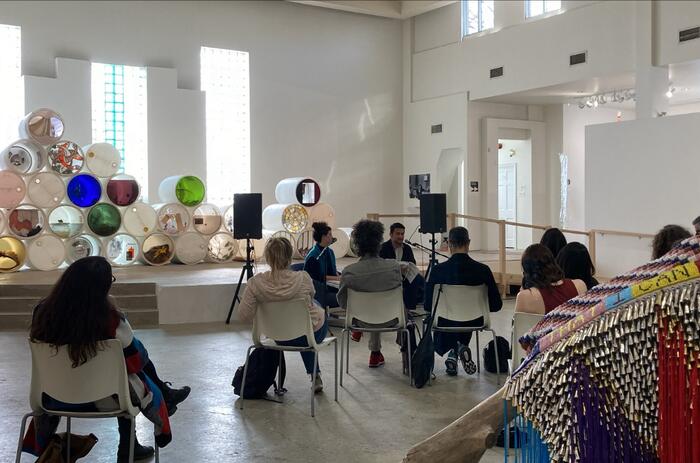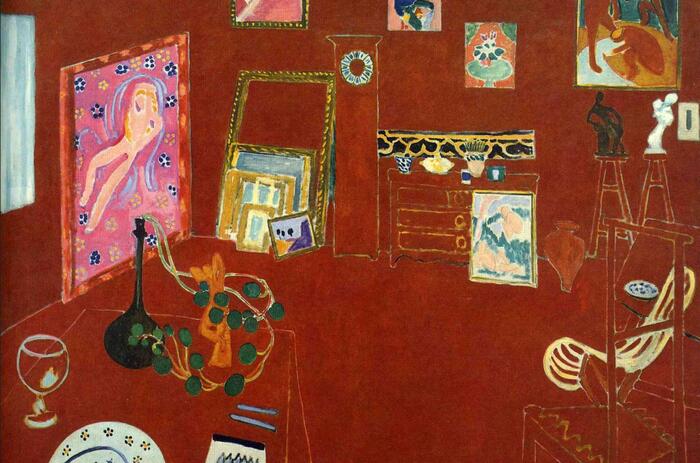ANDRÉS SERRANO: PORTRAIS DE L'AMERIQUE IN MUSEÉ MAILLOL
Andres Serrano carries with him a sulfurous reputation that he has not tried to hide in this exhibition, where famous and forceful works are presented. Under the title “Portaits de L'Amérique” the Musée Maillol offers a survey of Serrano's “American” work from his earliest creations in the mid-1980s to his most recent.

The exhibition is completed by a selection of works chosen specifically for the occasion that dialogues with the permanent collection and the works of Aristide Maillol. Native Americans, America, Nomads, Infamous, The Klan, Torture, Holy Works, Objects of Desire, Immersions, Bodily Fluids, Nudes, History of Sex, The Morgue, Robots, The Game: All Things Trump.... An eminently political work that disturbs and fascinates us with its power of representation as a mirror of our current world and of American society in particular.
When retracing the paths of this artist it is inevitable to mention the artistic connection between Serrano and his permanent references to the history of art, to classical and baroque painting in particular; two paths to better understand the coherence of this photographic body of work. The exhibition does not follow a strict chronological plan, but groups his work around important themes that, nevertheless, correspond mostly to specific periods of his activity; it explores the different aspects of his work in direct connection with contemporary American society, of which he offers here a multiple portrait.
Entering the exhibition, it is impossible to suspect the visual dialogue that is established between the group of works -more than eighty-, apparently unconnected to each other and the visitor. In the case of Native Americans and Nomads, they lead us to a whole complexity behind each of their characters linked to their territory, but also excluded from it. From the construction of a story to the construction of a portrait. But behind the gaze of each of these characters, there is a person; each one with his memory, his name, his territory, reflects the artist's double vision of society. Since he began his Nomads series in 1990, the Homeless have been a constant theme in Serrano's work, as evidenced by the installation of cardboard, purchased over the years, from homeless people that summarize their stories and which he integrates into his exhibitions. In any case, the exhibition allows us to judge with evidence and retrospectively the interest of his work, beyond the scandal it may have provoked. Even today, his work is far from being unanimous. A needless provocation for some, he enjoys a prestigious reputation in other circles.
Serrano's reading, often inspired by medieval and Renaissance religious art, is particularly striking in its darker aspects, his borrowings from both the most popular and the most official ritual forms, his fearless eye focused on the humble and the powerful, on the living as well as the dead. His portraits, beyond purely aesthetic criteria, beyond moral stances, raise a series of essential questions about art, about the point of view, about what it is possible to show and see; they allow us to confront the question of representation: how to show violence or the re-reading of religious art?
Andres Serrano belongs to the kind of artist who provokes, irritates. Of Afro-Hispanic origin -1950 New York- he grew up in a strict Catholic religious environment. His work is disturbing for its force of representation of our present world and is intimately related to the great masters, Delacroix, Tintoreto, Goya, Velasquez, El Greco, Géricault, of whom he only retains and takes into account their darkest sides. If his visibility began in 1987-1990 with the scandal caused by his work Piss Christ - a harmless image of a plastic crucifix immersed in an orange liquid whose blasphemous potential only arises when it is revealed that the liquid is urine - Serrano's photographic work deals with the great universal themes of the body, religion, sex and death. A great admirer of Caravaggio and Bosch, Serrano presents himself as “an artist with a camera,” not a photographer.
Monumental and pictorial, the exhibition brings together large, elegant and artistic images, treated with a psychedelic background scenery, as usual in Serrano, and allows not only to measure the great pictorial tradition in his work, but also the rigorous and original look he casts on today's American society. The precision in which the images have been framed manifests the will to show the beauty of the subject through compositions that still reveal the influences of the great masters of painting. However, these images do not free the viewer from certain inconveniences, such as fascination or repulsion, related to the actual contemplation of them where the initial aversion quickly gives way to amazement in front of the great variety of textures and shapes. So, it is up to the visitor to decide whether these images are truly outrageous or whether, as Serrano intends through the recurrent provocation in his works, to demand that we look with lucidity at all that we tend to push away, the refusal to know and accept all that Western culture represses.
For the viewer, two levels of reading are superimposed: that of the harshness of the testimony, of the raw reception of the reality of the facts, of the recognition of sometimes unbearable situations and of the awareness of their existence. In second reading, the level of the inexorable confrontation with the facts, transcended by its dimension of timelessness. And although Serrano wants to reconcile aesthetic and political commitment, and aesthetics with information, sometimes the aggressiveness of the photographic image disturbs the perception of the beholder.
Photography should be shown not only as a physical representation of a being or a thing. Through its own appearance it must bring a change to one's vision and to the one who directs it. His first conquest is well understood, the one who triggers the shutter. A great portraitist, Andres Serrano has immortalized American society and the issues that most concern him for more than thirty years. In this way, through the images exhibited, concerned with myths and universal suffering, he brings us his critical and indulgent perspective, invites us to reflect, confronting us face to face with our own questions, fears, fantasies and contradictions.
Under the contemporary context of art, where photography appears more and more as a central practice, Serrano's work is useful to remember its contradictory character, but always political and social. Even so, there is in these works a space for reflection on issues such as violence, political activism or the end of ideologies. The inclusion of certain “dramatic” elements, such as the re-reading and re-interpretation of key moments in history, allows him to guide the viewer towards a more complex perception of his work, where parody becomes a tool to meditate on the cruelest and most dramatic aspects of our reality. Andrés Serrano affirms, with “Portaits de L'Amérique”, his conviction that art can change the way people look at themselves. A way to question the representations of civility.








